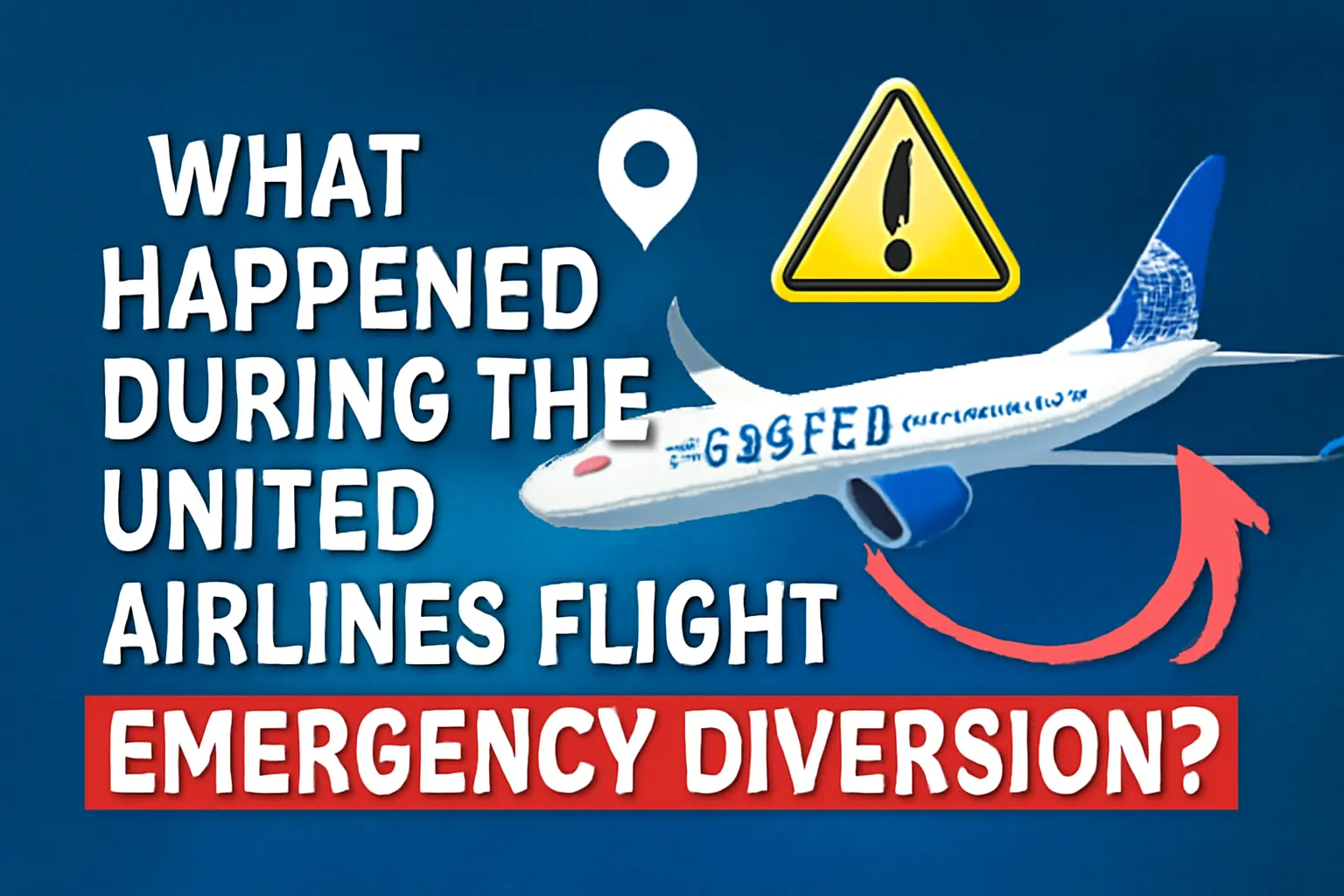Air travel is usually uneventful, but emergencies can happen when least expected. One such case was the United Airlines Flight UA770 emergency diversion. Passengers and onlookers were left wondering what went wrong when this flight, heading for its original destination, was forced to make an unscheduled landing. Here's a detailed account of what transpired, why the diversion took place, and how the situation unfolded.
The Incident in Brief
United Airlines Flight UA770 departed from San Francisco International Airport (SFO) to Chicago O’Hare International Airport (ORD), carrying a full complement of passengers and crew. What began as a routine flight took an unexpected turn when an emergency was declared mid-air. The need for immediate action led to the flight diverting to Denver International Airport (DEN).
Reports indicate the reason for the diversion was mechanical issue or warning signal related to onboard systems. Thanks to the swift response of the airline crew and ground support, the situation was handled professionally.
Timeline of Events
Take-off: Flight UA770 took off as scheduled. Weather conditions were reported as favourable, and passengers settled into their four-hour flight.
The Problem Unfolds: Approximately [1/hours] into the flight, crew members noticed mechanical issues or warning signals related to onboard systems.. The captain immediately assessed the situation and decided to alert air traffic control.
Declaration of Emergency: After confirming that the issue posed potential risks to safety, the flight crew declared an in-flight emergency. This decision ensures that necessary precautions are taken and assistance is ready on the ground upon landing.
The Diversion: The captain consulted airline operation centres and local air traffic control authorities. Denver International Airport (DEN), located from their position, was identified as the best option for an immediate landing.
The Landing: United Airlines Flight UA770 touched down safely. Emergency response teams were already on standby, ensuring passengers and crew were evacuated or assisted efficiently.
Trending Article: 2-weeks-from-today
Behind the Scenes: Why Emergencies Happen
Emergencies in aviation, though rare, are not unheard of. They generally fall into three categories:
Medical Emergencies – Passenger health issues sometimes necessitate an immediate landing to provide urgent medical care.
Mechanical Failures – While aircraft undergo rigorous checks, occasional mechanical issues like engine malfunctions or hydraulic system problems can arise mid-flight.
Environmental Concerns – Anything from unexpected turbulence to smoke or fire can prompt a diversion for safety reasons.
The case of the United Airlines Flight UA770 emergency diversion will be thoroughly investigated, as is the case with every aviation incident. All airlines, including United, follow strict protocols to identify risks and adapt procedures accordingly.
How Did the Crew Respond?
The professionalism of the UA770 crew was a pivotal factor in bringing the situation under control. Pilots are trained to handle emergencies with precision, and this incident was no different.
The captain followed standard operational procedures. This often involves:
Communicating with the airline's operations team.
Consulting air traffic control for the best course of action.
Balancing fuel, altitude, and passenger safety considerations.
Flight attendants played an equally important role. They ensured passengers remained calm, provided necessary instructions, and facilitated preparations for landing.
On the ground, emergency teams were alerted well in advance, ready to assist or provide any support required once the flight landed.
Passenger Reactions and Experience
For passengers onboard, the diversion likely came as a surprise. Some travellers shared their initial concerns about the announcement, while others remarked on the calm and professional demeanour of the flight attendants.
Most commercial airlines, including United, are meticulous in regularly training their cabin crew to manage such situations. From reassuring passengers to addressing specific needs like medical assistance, the crew maintains a composed approach to reduce panic.
Passengers were safely evacuated, and arrangements were made for their onward travel. While delays and diversions can be frustrating, safety remains the priority in any aviation scenario.
What Happens After a Diversion?
Once the immediate emergency is resolved, a rigorous investigation begins. Teams from United Airlines, aircraft manufacturers, and aviation regulators will evaluate:
The Root Cause: What initiated the emergency on Flight UA770? Was it preventable?
Crew Performance: How well did the pilots and cabin crew adhere to prescribed procedures?
Passenger Support: Were necessary accommodations provided promptly after landing?
Such investigations not only uncover what went wrong on Flight UA770 but also prevent similar occurrences in the future.
Safety First in Modern Aviation
While an emergency diversion might sound alarming, it underscores the layers of safety embedded into air travel today. Modern aircraft are equipped with state-of-the-art technology to identify and address issues before they escalate. Pilots undergo extensive training to rehearse potential scenarios, ensuring that they can fly, land, and safeguard lives even under challenging conditions.
United Airlines, like other major carriers, places passenger safety at the core of its operations. Incidents like the United Airlines Flight UA770 emergency diversion are carefully analysed, and lessons learned are applied across the industry to make future travel even safer.
Frequently Asked Questions (FAQs)
1. What caused the United Airlines Flight UA770 emergency diversion?
The specific cause is under investigation. However, reports indicate it was likely due to mechanical issue or warning signal related to onboard systems..
2. How common are flight diversions?
Diversions are rare. The vast majority of flights operate without any issues. When diversions occur, they are strictly precautionary and in the interest of safety.
3. Were there any injuries on board Flight UA770?
Thankfully, there were no reports of injuries. All passengers and crew were safe upon landing.
4. How does the crew decide where to divert?
Pilots consult with air traffic control and airline operations to determine the nearest suitable airport. Factors like runway length, airport facilities, and weather conditions play a role in the decision.
5. What happens to passengers after a diversion?
Passengers are typically assisted with alternate travel arrangements, including rebooking onto another flight or providing accommodation if necessary.
6. How can aviation incidents be prevented?
Rigorous maintenance, advanced technology, and ongoing crew training significantly reduce risks. Additionally, thorough investigations ensure that lessons learned lead to enhanced safety standards.
United Airlines Flight UA770’s emergency diversion may have disrupted passengers’ plans, but it demonstrated the effectiveness of safety protocols in the aviation industry. While inconveniences are inevitable when diversions occur, the ultimate goal is always to prioritise the wellbeing of everyone on board.





